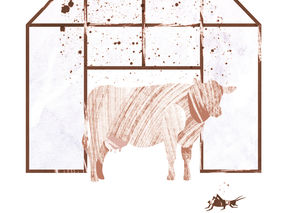
Would you chow down on crickets? Top chef Henri Alén has already served them as a filler to a rye taco garnished with artichoke and herbs. Shops presently sell crickets in the form of, among other things, breakfast muesli and cricket-chilli nuts.
“The taste of crickets is nutty, rooty and mushroom-like. Some identify notes of chicken or shrimp,” says Perttu Karjalainen, who is the CEO of cricket producer EntoCube and an Aalto student.
EntoCube specialises in growing insects and developing incubation technology. Its founders are motivated by sustainable food production and the circular economy. Growing insects requires a lot less space, water and fodder than raising cows, pigs or chicken.
EntoCube started growing crickets in a container on the Otaniemi campus in 2014. The company supplies insect production systems and it is attempting to build a market for insects with its brand Samu.
“EntoCube farms are also being built in empty production facilities, of which there are an enormous amount in Finland. We recently delivered a farm to an old piggery in Tammela.”
There’s nothing new about eating insects, they have been used as nourishment around the world for millennia. More than two billion people eat them regularly, Karjalainen points out.
Crickets are quite the superfood. They contain lots of protein, unsaturated fats, important amino acids, minerals and vitamin B-12. For now, insects remain an expensive raw material because their production requires many hours of manual labour.
“The producer price of pork can be as low as €1.50 per kilo, but with crickets the labour alone will cost about €18 per kilo.”
Karjalainen predicts that production costs will fall in the near future through the introduction of improved technologies. As production volumes grow, the time required to perform individual tasks will shorten and materials can also be sourced at a lower cost thanks to larger order volumes.
“Five years from now, insects will be everyday food. The consumer can then go to the shop thinking should I buy 400 grams of mincemeat – or maybe today is my cricket day.”
Text: Tea Kalska. Illustration: Ida-Maria Wikström.
This article is published in the Aalto University Magazine issue 22 (issuu.com), April 2018.
- Published:
- Updated:
Read more news

Student-driven projects to become Campus Sustainability Champions
This year, two student-led projects were selected as Campus Sustainability Champions. The awards were presented at the annual ACRE Day on 9 October 2024.
Merja Tornikoski: I am an observing astronomer by soul
'I spend a lot of sleepless nights because of my hobby. I am especially interested in night photography and natural phenomena, and the Northern Lights photography combines both elements. I think the northern lights are the most beautiful manifestations of solar activity.'
Behind success there is determination
Aalto University supports Ukraine’s university students whose studies are interrupted by the war. This is one of the student's story.